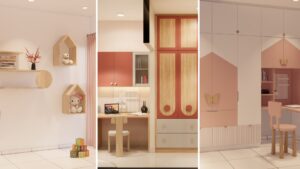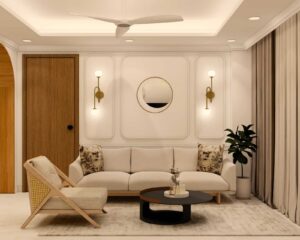Are you passionate about interior design and ready to turn your flair for aesthetics into a thriving business? Starting your interior design venture can be an exciting journey, blending creativity with entrepreneurship. In this comprehensive guide, we’ll explore how to kickstart your interior design business from an entrepreneurial perspective, covering everything from honing your skills to building a brand and attracting clients.
1. Cultivate Your Design Skills:
Before diving into entrepreneurship, ensure your design skills are top-notch. Invest time in refining your craft, staying updated on industry trends, and cultivating a unique design style that sets you apart. Attend workshops, take online courses, and seek mentorship from experienced designers to continuously enhance your skills.
2. Develop a Business Plan:
Treat your interior design venture as a business from the start. Craft a detailed business plan outlining your goals, target market, competition analysis, and financial projections. A well-thought-out plan will serve as your roadmap, helping you stay focused and make informed decisions.
3. Establish Your Brand Identity:
Your brand is more than just a logo; it’s the essence of your business. Define your brand identity by articulating your design philosophy, values, and the unique aspects that make your services stand out. Create a visually appealing and cohesive brand image across your website, social media, and promotional materials.
4. Build an Online Presence:
In today’s digital age, having a strong online presence is crucial. Develop a professional website showcasing your portfolio, services, and contact information. Leverage social media platforms to share your design projects, engage with your audience, and build a community around your brand.
5. Network and Collaborate:
Networking is a powerful tool for entrepreneurs. Attend industry events, join professional organizations, and connect with other designers, suppliers, and potential clients. Collaborate with local businesses, architects, or real estate professionals to expand your reach and create mutually beneficial relationships.
6. Pricing Strategies:
Establishing the right pricing structure is essential. Consider factors such as your expertise, the scope of the project, and market rates. Be transparent about your pricing on your website to set clear expectations for potential clients. Offer package deals or discounts for larger projects to attract a broader clientele.
7. Legalities and Regulations:
Ensure that your business complies with local regulations and obtains any necessary licenses or certifications. Set up a legal structure for your business, whether it’s a sole proprietorship, LLC, or corporation. Consult with a legal professional to draft contracts that protect both you and your clients.
8. Marketing and Advertising:
Develop a robust marketing strategy to promote your interior design business. Utilize both online and offline channels such as social media advertising, content marketing, and local print media. Consider offering promotions or hosting events to generate buzz and attract your first clients.
9. Create a Client-Centric Approach:
Building strong client relationships is key to a successful interior design business. Listen actively to your clients’ needs, communicate clearly, and involve them in the design process. Encourage referrals by delivering exceptional service and exceeding expectations.
10. Embrace Technology:
Stay updated on the latest design software and project management tools. Utilize 3D rendering and virtual reality applications to provide clients with realistic visualizations of your designs. Efficient use of technology can enhance your productivity and streamline your design processes.
11. Financial Management:
Establish a sound financial management system to track expenses, income, and taxes. Invest in accounting software or hire a professional accountant to ensure accurate financial records. Regularly assess your budget and adjust your strategies to maximize profitability.
12. Continuous Learning and Adaptation:
The interior design industry is dynamic, with trends and client preferences evolving. Commit to continuous learning and staying informed about industry developments. Be flexible and adapt your design approach to meet the ever-changing demands of the market.
Embarking on the journey of launching your interior design business is an exciting venture that combines your passion for design with entrepreneurial spirit. By focusing on honing your skills, developing a solid business plan, building a strong brand, and adopting effective marketing strategies, you can create a successful and fulfilling career in the world of interior design. Remember, entrepreneurship is a journey of continuous learning and growth, so embrace challenges, stay resilient, and let your creativity shine as you build your interior design empire. Good luck!


